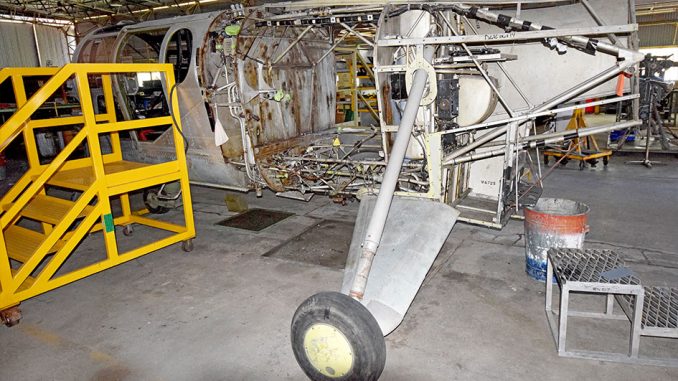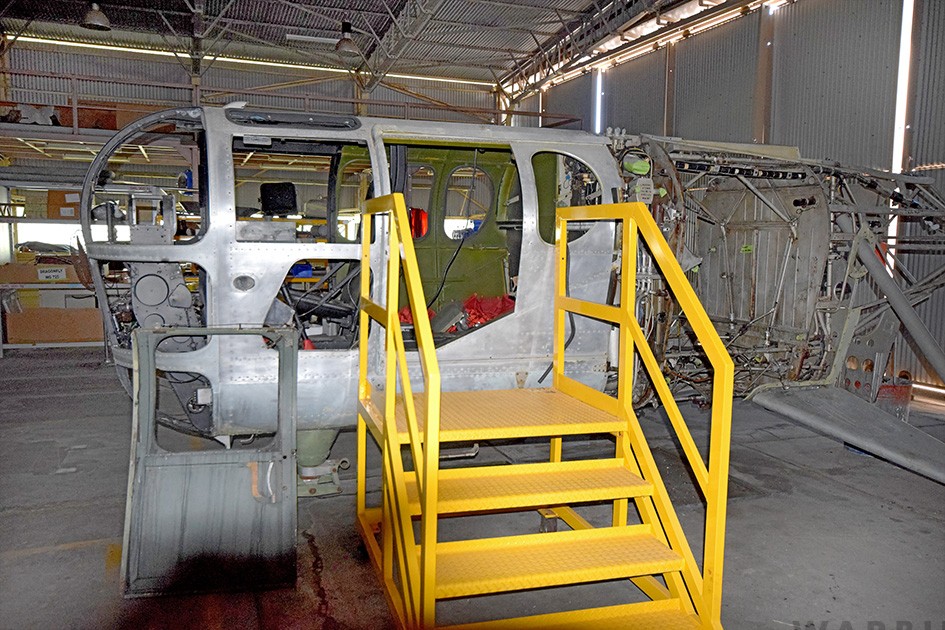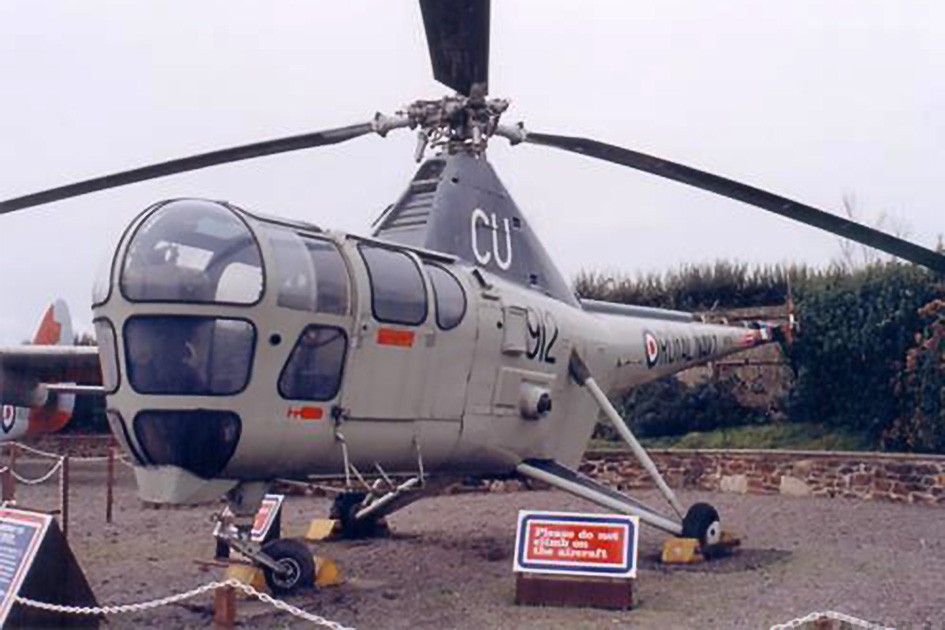
In addition to his report on restoration progress with Avro Anson Mk.I W2472, our good friend John Parker from WarbirdsOnline recently relayed details about another project underway at the RAAF Amberley Aviation Heritage Centre near Brisbane in Queensland, Australia. This aircraft is an early military helicopter design, a Westland WS-51 Dragonfly HR.3, which itself was a license-built variant of the Sikorsky S-51, a type which also served in Australia’s armed forces, as John Parker relates…
Amongst the restoration projects presently underway with the RAAF Heritage Branch at RAAF Amberley is a Westland Dragonfly HR.3, which once served with Britain’s Royal Navy as WG725. While this example never flew in Australia, it is representative of a handful that did. The type was one of the first practical helicopter designs to see Australian military service – or anywhere else, for that matter. The Dragonfly is actually a British-built variant of the Sikorsky S-51, and both the Royal Australian Air Force (RAAF) and Navy (RAN) operated examples of each in small numbers between 1947 and 1963.

Three Sikorsky-built S-51s, A80-1, A80-374 and A80-636, served in the RAAF. Only ‘374 still survives, and she is on display within the RAAF Museum at RAAF Point Cook near Melbourne, Victoria.
Meanwhile, the RAN operated four Westland-built Dragonfly helicopters on their British-built Majestic-class aircraft carrier, HMAS Sydney (formerly HMS Terrible). These helicopters were on loan from Britain’s Royal Navy and comprised HR.1 VZ965 and HR.3s WG707, WG753 and WP498. Two Sikorsky-built S-51s, borrowed with their crews from the US Navy’s helicopter utility squadron HU-1 Pacific Fleet Angels, also saw RAN service during the Korean War. These aircraft (designated as the HO3S-1 in the U.S. Navy) operated with the serials UP-21 and UP-28 from the carrier HMAS Sydney in the plane guard and air-sea-rescue roles.
As stated earlier, the sole survivor of these early helicopters, A80-374, survives at the RAAF Museum, however, another aircraft is the subject of this article, and this is Westland Dragonfly HR.3 WG725 which lived out its service life within the United Kingdom.
Westland delivered WG725 to Aircraft Holding Unit (AHU) at Royal Navy Air Station (RNAS) Gosport near Portsmouth, England during 1952, but she moved later that year to the Aeroplane and Armament Experimental Establishment (A&AEE) at Boscombe Down for trials work. In February 1953 the aircraft took part in flood relief efforts in the Netherlands and that June she was noted at White Waltham, near Windsor, England. Although she went back to the A&AEE in July 1953, the Dragonfly returned to White Waltham again before too long – both Westlands and Fairey Aviation staged a fair number of their post-war air trials out of this airfield.
In November 1956, the Dragonfly returned to Westlands for modifications, following which she was reissued to Controller Supplies (Air) who assigned her to Royal Aircraft Establishment (RAE) Bedford and then back to Boscombe Down in 1959, albeit briefly, as she ventured aboard the Royal Navy’s light fleet carrier, HMS Centaur, that January for air trials work.

The helicopter returned to RAE Bedford later that January and retired from use in June 1960. In November 1960 she went, as an instructional airframe, to the Royal Air Force (RAF) Technical Training School at RAF Weeton and then into the store at RAF St Athan from 1965 until 1967. WG725 took part as a static exhibit in the RAF’s 50th-anniversary display at RAF Abingdon in 1968 and from there she went to RAF Colerne in 1969, where the RAF Museum maintained some of its exhibits in storage at the time. In 1975, the Dragonfly moved again, this time to RAF Odiham (home of the RAF’s heavy-lift helicopter fleet) where she remained until moving on to the Army Museum of Flying at Middle Wallop in 1978.
Following an exchange arrangement, the helicopter then moved to Southend in 1981, where she was repainted for Venezuelan Air Force celebrations, marked as “0020” and registered N9987Q. However this arrangement failed, sadly, and the aircraft went into store on-site at Southend, until moving to the Cornwall Aero Park in Helston, Cornwall in 1986. Here she underwent a cosmetic restoration, going on display representing “WG754” 912/CU until early 2000 when the RAN Fleet Air Arm Museum acquired her. They had the Dragonfly moved just down the road to the Aircraft Maintenance Group at RNAS Culdrose that February, where a team dismantled the helicopter for overseas shipment to her new home in Nowra, about 100 miles down the coast from Sydney, New South Wales. However, once in Australia, the helicopter went into storage. While some basic restorative work took place at Nowra, it’s fair to say that a lot remains to be done. WG725 remained at Nowra until the RAAF Museum acquired her last year, moving the helicopter to Amberley in May 2020. Museum personnel have begun stripping the aircraft down and intend to restore the Dragonfly for static display within the RAAF Amberley Aviation Heritage Centre. Here she will represent Dragonfly A80-636 which flew with RAAF No.23 Squadron when stationed at RAAF Amberley.
We will continue to monitor restoration progress on the Dragonfly as it moves towards completion. The author would like to thank AIRCDRE John Meier and SQNLDR Paul Ashby of the RAAF History and Heritage Branch for helping make this article possible.
Many thanks to John Parker at WarbirdsOnline for this article.


Be the first to comment
Graphic Design, Branding and Aviation Art